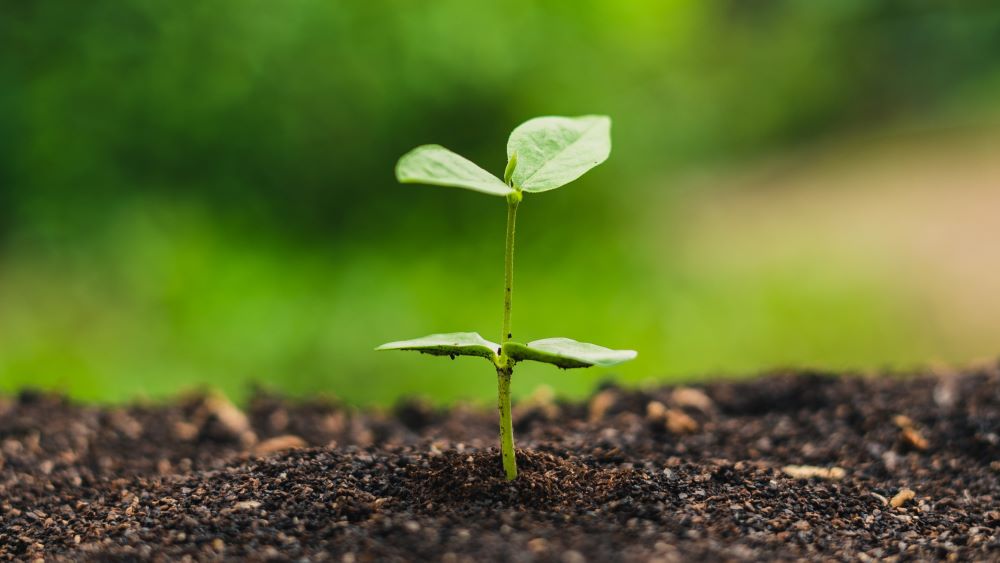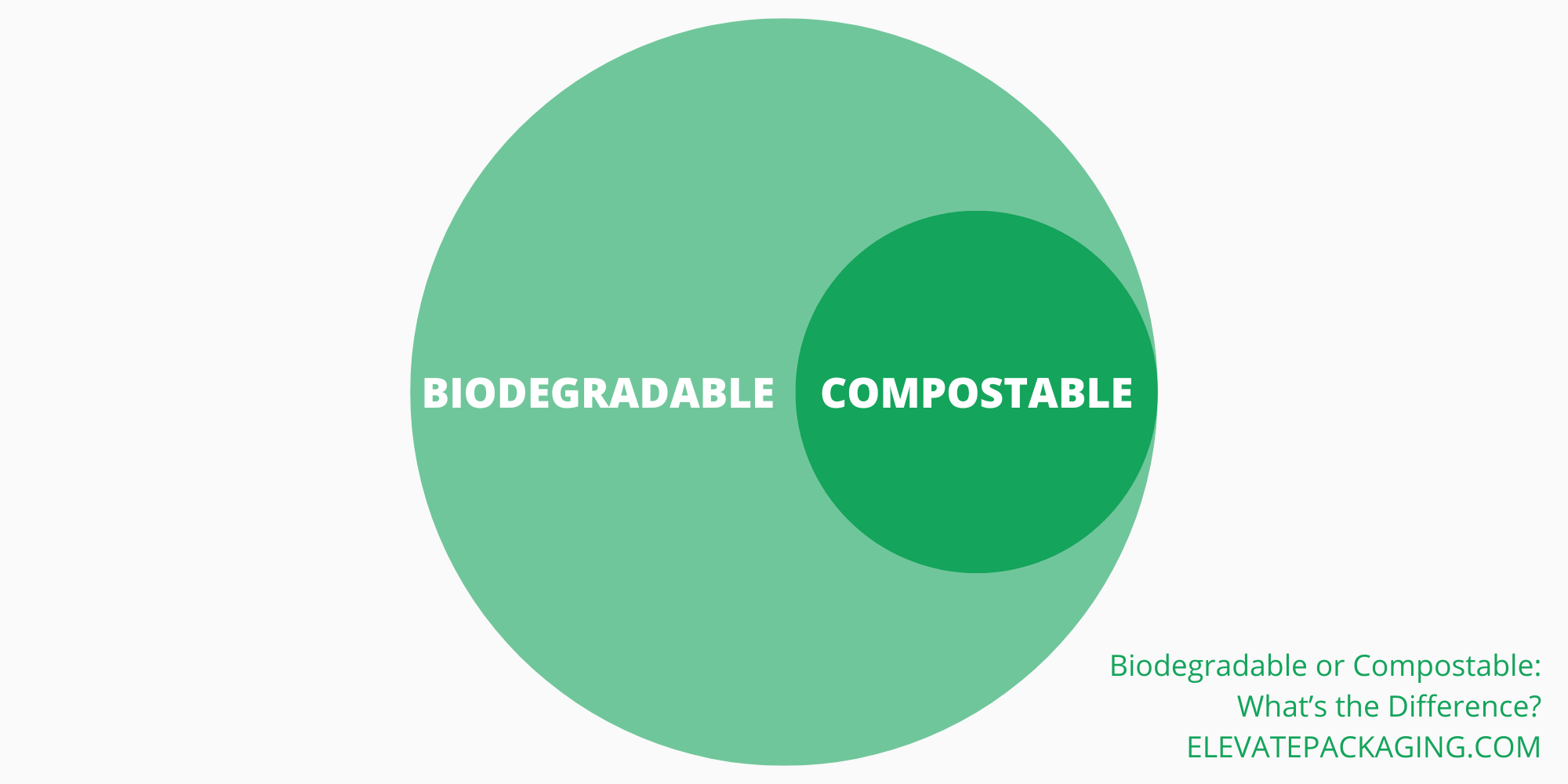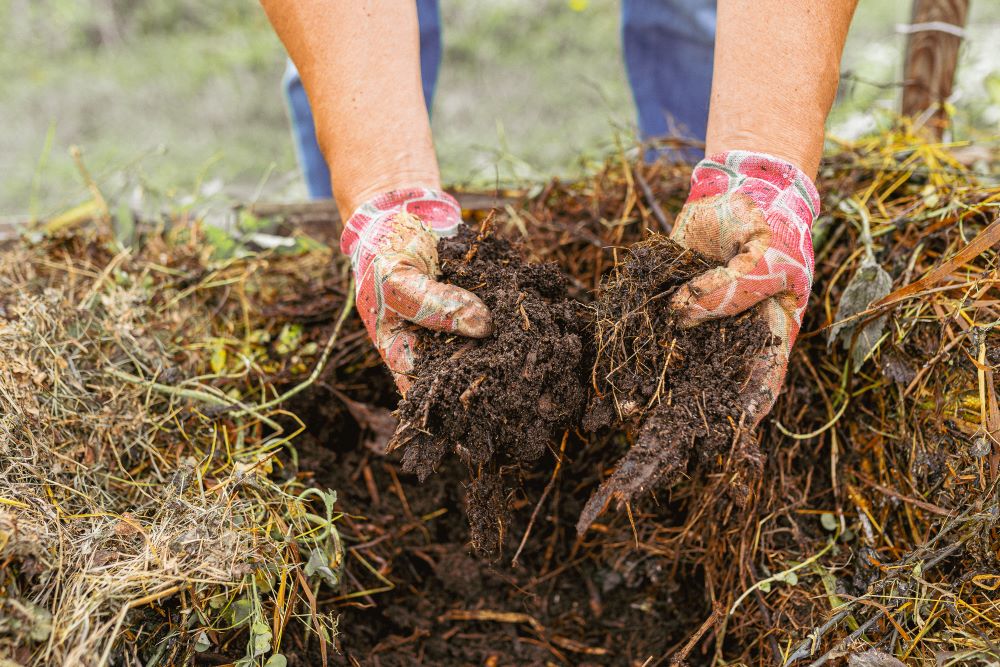Recent Posts
- Home
- Elevate Blog
- Biodegradable or Compostable: What’s the Difference?
Biodegradable or Compostable: What’s the Difference?
Posted on

Ever picked up a product labeled "biodegradable" or “compostable” and wondered what it means? You're not alone!
The terms biodegradable and compostable are often used interchangeably. While there is some overlap, they do not mean the same thing!
All compostable products are biodegradable, but not all biodegradable products are compostable.

While it is great that sustainable products are becoming more popular, some of the terms used to describe them aren’t always clear. Understanding the definitions of terms such as compostable and biodegradable empowers everyone with the knowledge to make sustainable choices.
It's important that both brands and consumers know the difference. Customers want to know they're making the best choice when purchasing from you. Your customers need to know how to properly dispose of your packaging. Being clear that your packaging is compostable creates confidence in your sustainable brand and allows consumers to make smarter purchasing decisions.
Compostable Definition: What Does Compostable Mean?
Compostable materials break down completely into their basic parts (water, carbon dioxide, and biomass). They will break down in a timely manner at a rate consistent with similar organic materials and will not release harmful residue or toxins.
Products labeled as compostable must be tested to meet US industrial composting standards ASTM D6400 and ASTM D6868. These standards require that compostable products biodegrade and disintegrate within 90 days and leave no harmful residue. Testing includes a seed germination trial, which ensures the compost produced is not harmful to plant life.
Compostable products add value to the planet's ecosystem by decomposing into nutrient-rich compost. Packaging that is labeled as compostable should be disposed of in a compost bin.
More Information on Elevate Packaging’s Composting Standards
Biodegradable Definition: What Does Biodegradable Mean?
If something is biodegradable it can be broken down by naturally occurring microorganisms such as bacteria and fungi. Every material will biodegrade, given enough time (even centuries!).
Unlike compostable, the term biodegradable is not regulated. There is no time limit for biodegradation, and no testing is done to ensure that the product is free from dangerous toxins. Ideally biodegradable material will break down quickly and safely, however not every product advertised as biodegradable meets these criteria.
A product labeled as biodegradable without any further context is vague and misleading to consumers. Because this term is so vague, biodegradable products may contaminate compost and should be disposed of in trash collection destined for landfill.
Read More: What is Compost Contamination?
Which is Better, Compostable or Biodegradable?
Both terms describe a natural process for recycling organic waste. All compostable products are biodegradable, but biodegradable products are not always compostable.
The main difference is that compostable products have undergone strict testing to ensure that they break down within a specific time frame and do not release anything harmful into the environment. Biodegradable products have no such requirements, meaning that they may not be as beneficial as they first appear.
Compostable packaging will:
- Break down within the time needed by the composting environment
- Not release harmful toxins as it decomposes
- Create healthy compost that enriches the soil
Compostable packaging must adhere to strict standards and has been rigorously tested. Packaging labeled only as biodegradable cannot be composted and must therefore be sent to a landfill.
Begin Your Compostable Packaging Journey

Other Terms
Degradable
The term degradable defines a broad category of things that are capable of breaking down and disintegrating. There is no standard for how it breaks down, how long it will take, or what it will break down into. It could be safe, but it is most likely not.
Oxo-Degradable
The term Oxo-Degradable is simple greenwashing. Oxo-degradable products are conventional plastic mixed with an additive that helps them disintegrate faster. If you’re familiar with the problems caused by microplastics you can see that this is not only a poor solution to plastic waste, but actually incredibly harmful!
Once disposed of, the plastic becomes brittle and quickly fragments into smaller and smaller pieces. Oxo-degradable products produce harmful microplastics by design!
Both degradable and oxo-degradable products are not compostable and are not suitable for recycling. They should be disposed of in a landfill.
How to Choose the Most Sustainable Packaging
Understanding the nuances between "biodegradable" and "compostable" might feel overwhelming initially, but once you're armed with this knowledge, your sustainable packaging decisions become clearer!
Every phase, from sourcing raw materials to the disposal of the product, has an environmental stake. This is where a product life cycle assessment may be helpful – it provides a view of a product's full environmental journey, revealing areas for possible sustainable improvements. Curious about how to do this? Dive deeper with our guide on how to conduct a product life cycle assessment.
A circular economy aims to eliminate waste and pollution, circulate materials, and regenerate nature. What Does the Life Cycle of Your Compostable Packaging Look Like? Choosing compostable packaging means you're helping to reduce waste and keep our soil healthy. We're here to help you make the most environmentally friendly choices. Together, we can keep moving towards a world with less waste and more respect for our environment.
Ready to Start Your Sustainability Journey?
*Originally posted
 Loading... Please wait...
Loading... Please wait...




